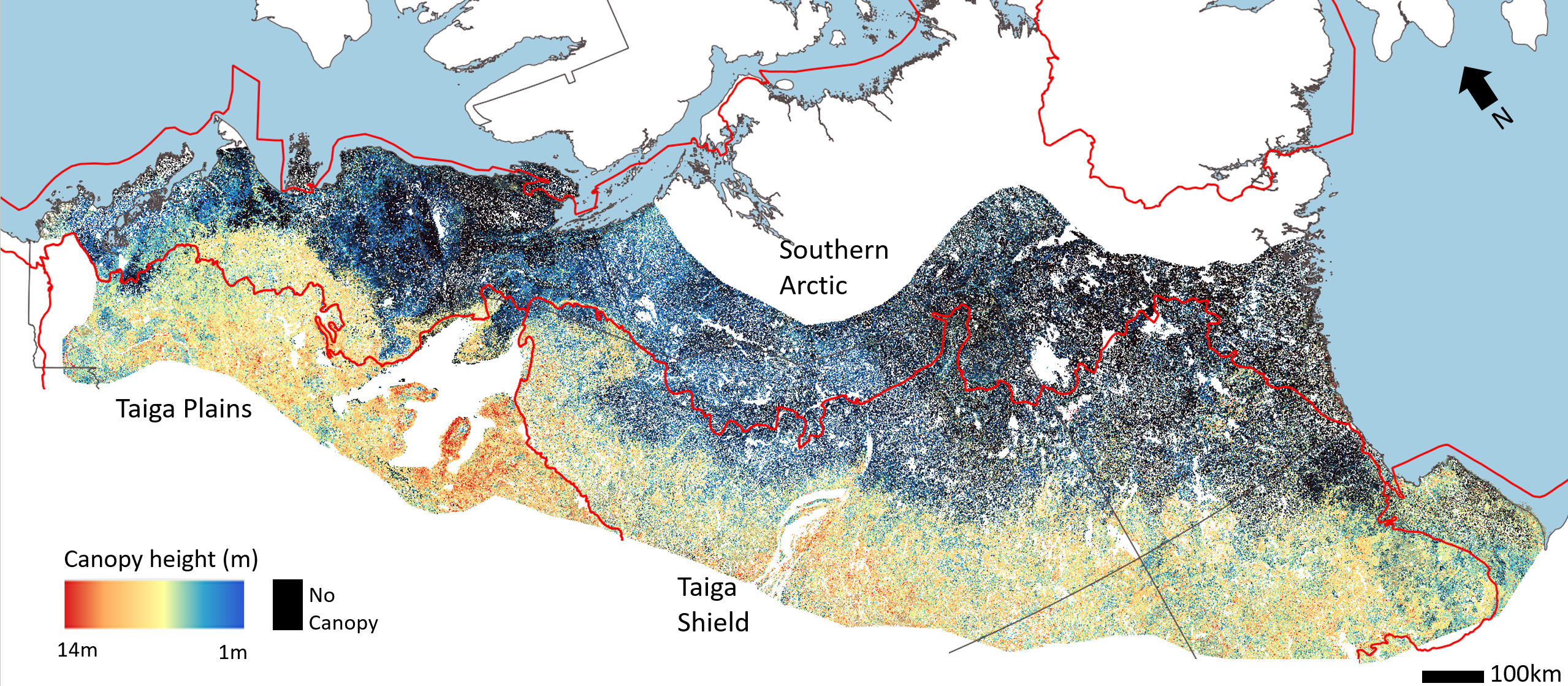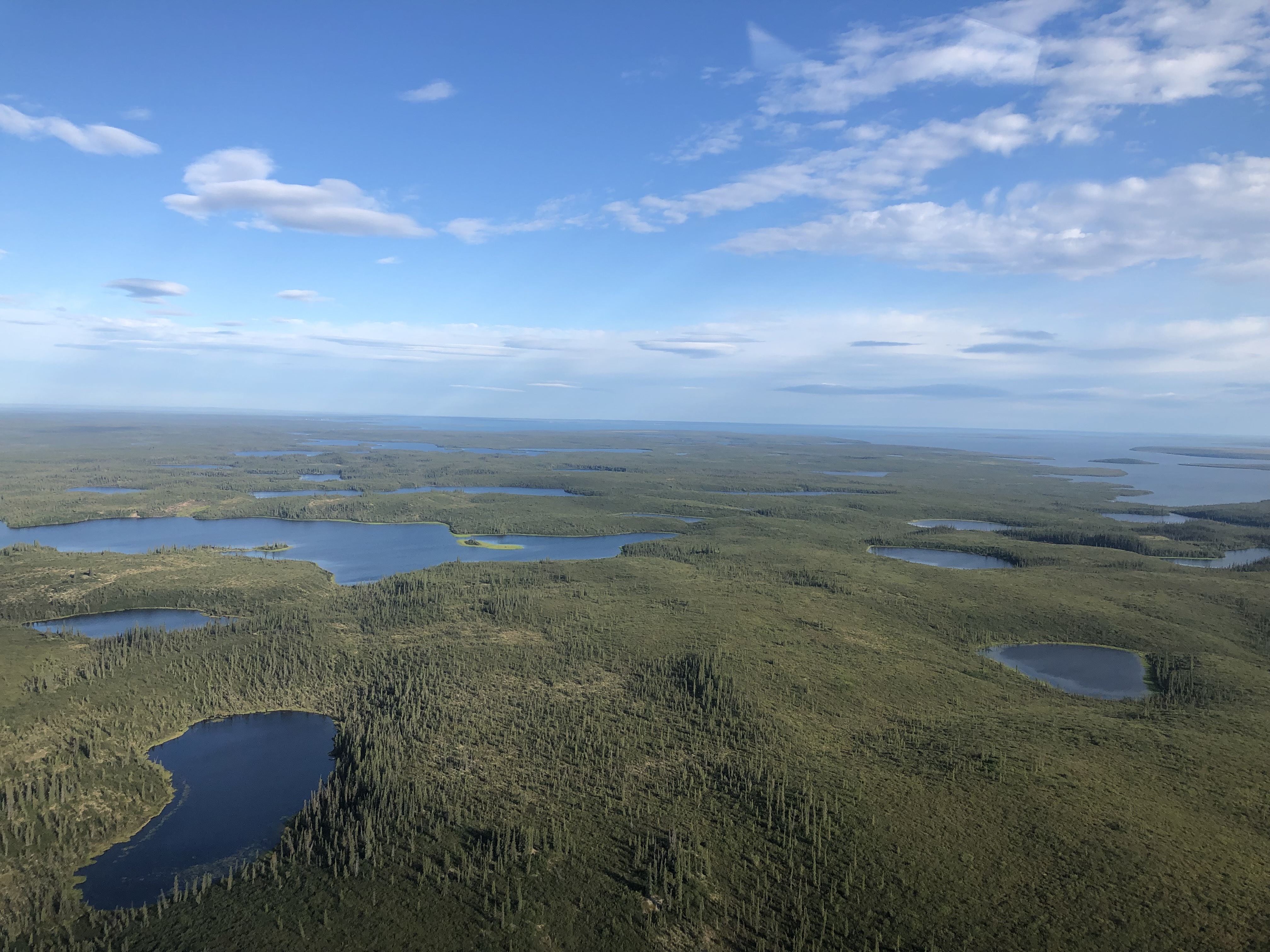Research
Remote sensing of the northern treeline
High-latitudes are experiencing some of the most rapid climatic hanges on the planet. This is driving shifts in what types of plants can grow and how productive they are. My PhD research focuses on using satellite remote sensing imagery to model vegetation height and cover across the Canadian forest-tundra ecotone. I use historical satellite images to map change in vegetation structure from 1985 to the present day and understand how the limit of northern boreal forests has responded to climate. This research has important implications for habitat monitoring for a range of boreal and tundra wildlife.
Using drones to map carbon storage across treelines
Warming temperatures and changes in plant composition at the northern treeline can alter the amount of carbon stored in permafrost soils. My PhD research also uses high-resolution drone imagery to map tree and shrub density and associate vegetation structure with soil organic carbon storage. We also use drone imagery to validate and understand better understand spectral patterns observed in moderate resolution satellite data. This field research was conducted north of Inuvik, NWT on the traditional territory of the Inuvialuit peoples.
Lakes, lakes, lakes
My MSc research focused on using satellite images to track changes in the number and size of lakes across the western Canadian Arctic. We also collected water samples to understand how permafrost thaw impacts water quality in different site types across the Tuktoyaktuk Coastlands and the Mackenzie River Delta, NWT.

.jpg)
